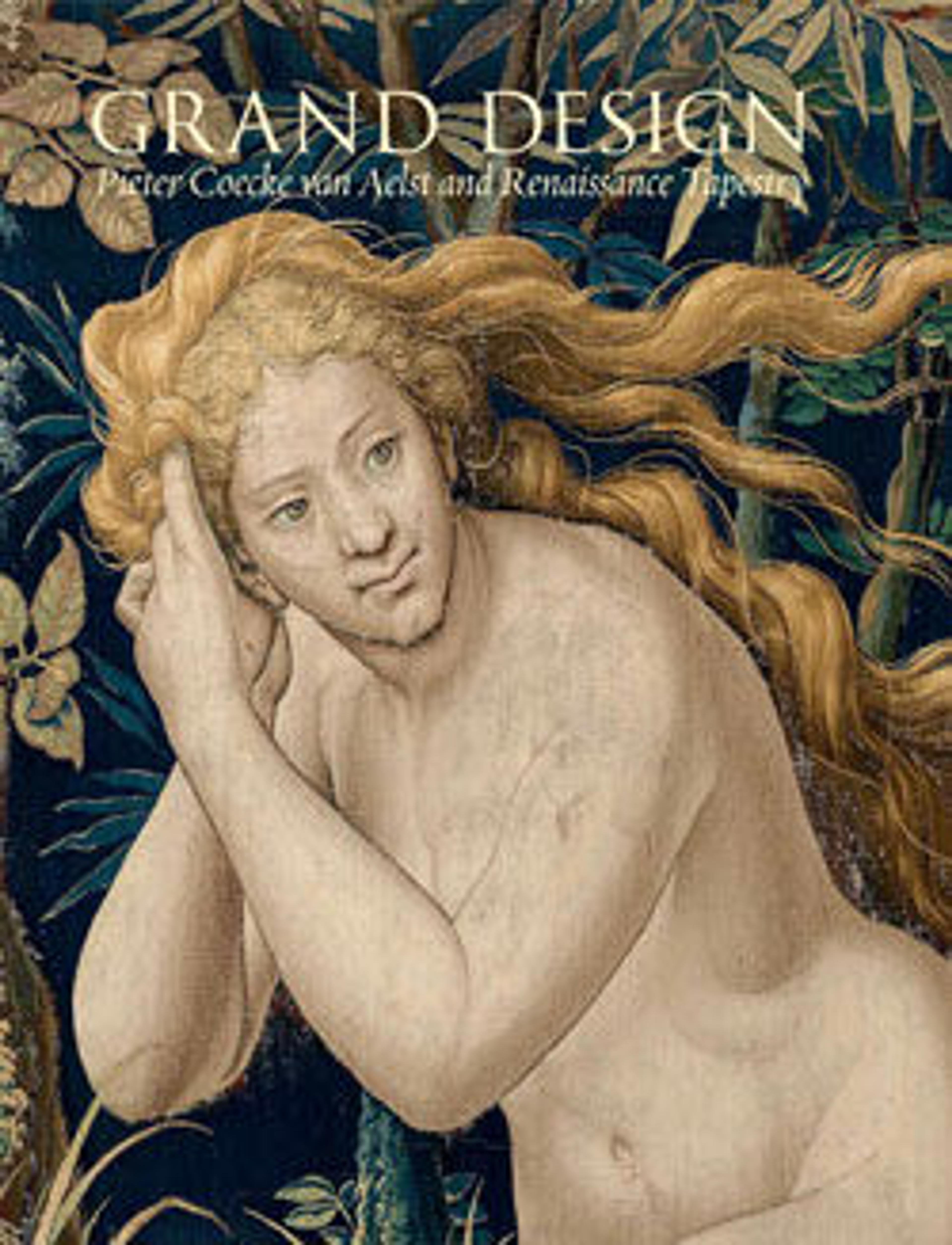Mercury Changes Aglauros to Stone, from the Story of Mercury and Herse
Picking up the narrative from the tapestry of Aglauros’s Vision of the Bridal Chamber of Herse (also in The Met's collection, 41.190.135), this is the final episode in the story of the god Mercury’s love for the mortal princess of Athens, Herse. Emboldened by her jealous vision of Mercury and Herse’s union, Herse’s sister Aglauros barred his entry to her sister’s apartments. In his anger and frustration, Mercury transformed Aglauros into stone; in the tapestry, we see her disappearing into the door-frame. Mercury can seen again at the right, flying away and leaving the longed-for union with Herse unfulfilled. Such was the appeal of Lodi’s designs for this tapestry series that his cartoon-models were used, and reused, for decades: Willem de Pannnemaker, one of the most admired and successful master-weavers working in Brussels, directed the weaving of this sumptuous edition approximately thirty years after it was designed.
Artwork Details
- Title:Mercury Changes Aglauros to Stone, from the Story of Mercury and Herse
- Designer:Design attributed to Giovanni Battista Lodi da Cremona (Italian, active 1540–52)
- Designer:Border design attributed to Giovanni Francesco Penni (Italian, Florence ca. 1496–after 1528 Naples) ,from the set of the "Acts of the Apostles"
- Workshop director:Weaving workshop directed by Willem de Pannemaker (Flemish, active Brussels, 1535–78, died 1581)
- Date:designed ca. 1540, woven ca. 1570
- Culture:Netherlandish, Brussels
- Medium:Wool, silk and precious metal-wrapped threads (20-22 warps per inch, 8-9 warps per cm.)
- Dimensions:170 1/16 x 283 1/16 in. (432 x 719 cm); weight confirmed, includes tube: 14 ft. 9 in. × 23 ft. 6 in., 199 lb. (449.6 × 716.3 cm, 90.3 kg)
- Classification:Textiles-Tapestries
- Credit Line:Bequest of George Blumenthal, 1941
- Object Number:41.190.134
- Curatorial Department: European Sculpture and Decorative Arts
More Artwork
Research Resources
The Met provides unparalleled resources for research and welcomes an international community of students and scholars. The Met's Open Access API is where creators and researchers can connect to the The Met collection. Open Access data and public domain images are available for unrestricted commercial and noncommercial use without permission or fee.
To request images under copyright and other restrictions, please use this Image Request form.
Feedback
We continue to research and examine historical and cultural context for objects in The Met collection. If you have comments or questions about this object record, please contact us using the form below. The Museum looks forward to receiving your comments.
